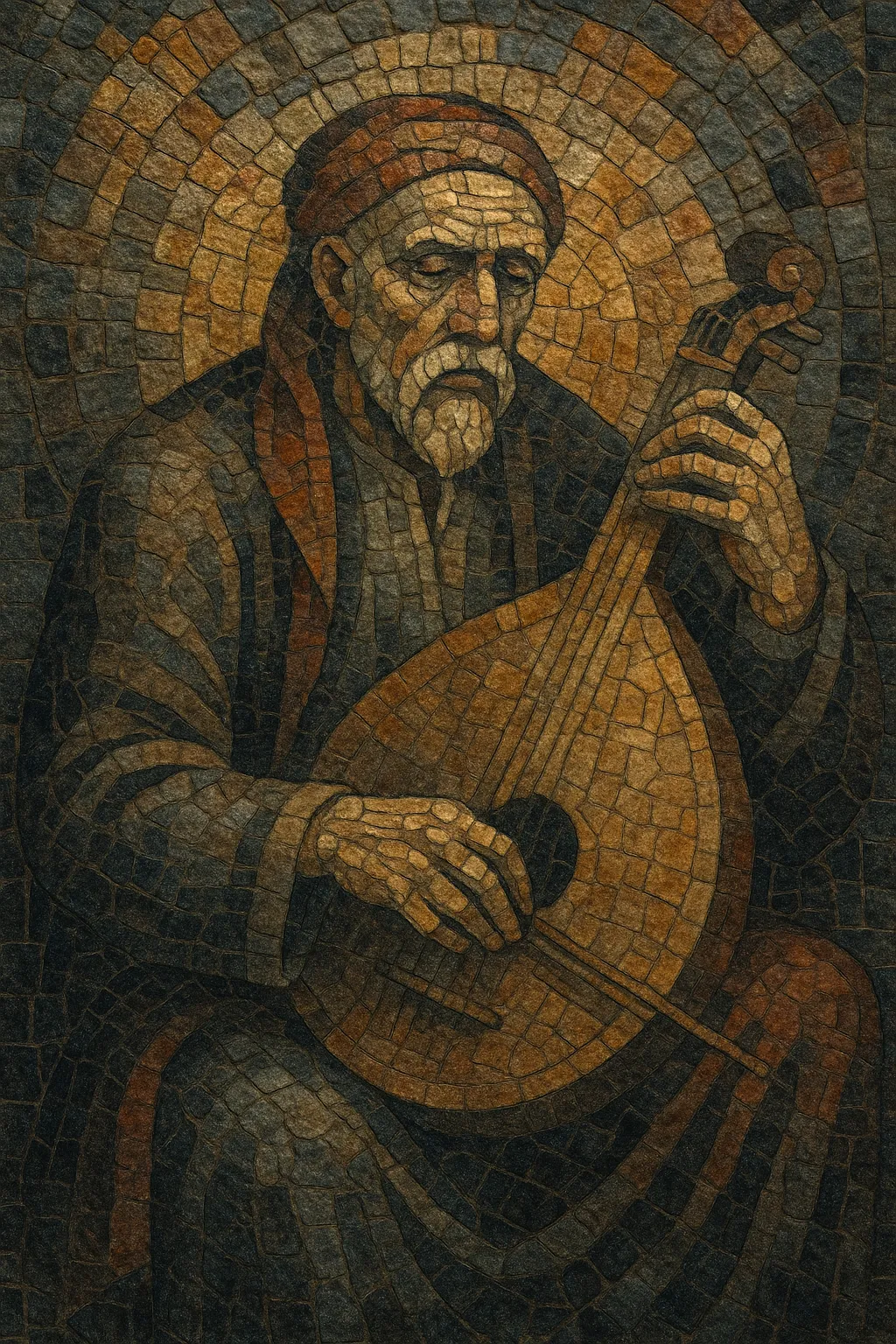Duma (plural: dumy) is a Ukrainian tradition of epic sung poetry, performed historically by itinerant blind bards known as kobzari and lirnyky. It features declamatory, recitative-like melodies delivered in a free, flexible meter (parlando-rubato), with melismatic ornamentation and a narrow ambitus.
Narratives recount Cossack-era exploits, captivity laments, moral dilemmas, and spiritual reflections, typically concluding with a didactic or prayerful coda. The primary accompaniment instruments are the bandura, kobza, or hurdy-gurdy (lira), giving the genre its distinctive, resonant timbre.
Duma emerged in the Ukrainian lands during the Cossack period, crystallizing as an oral epic song tradition tied to historical events, frontier warfare, and spiritual life. Early performers were often blind bards—kobzari (bandura/kobza players) and lirnyky (hurdy-gurdy players)—who preserved local memory, moral codes, and communal identity.
For centuries, dumy were transmitted master-to-apprentice, relying on formulaic melodic motifs, flexible rhythm, and improvisatory variation. Performances typically moved from an intoned prelude to heightened narrative declamation and closed with a moralistic or prayerful ending. The bandura/kobza or lira provided a droned and arpeggiated support that reinforced modal centers and cadential formulas.
Political upheavals, modernization, and repression (particularly under Soviet rule) diminished the kobzar guilds and endangered the tradition. Ethnographers and scholars (e.g., Filaret Kolessa, Hnat Khotkevych) documented repertoires, while emigré and domestic musicians safeguarded performance practice. In the mid-to-late 20th century, institutional ensembles and individual bandurists helped revive interest, adapting dumy for stages and recordings.
Contemporary performers continue archival research and historically informed practice, while others integrate elements of duma style into concert, educational, and fusion contexts. The tradition remains a symbol of Ukrainian cultural continuity, linking historical memory with present-day artistic expression.


